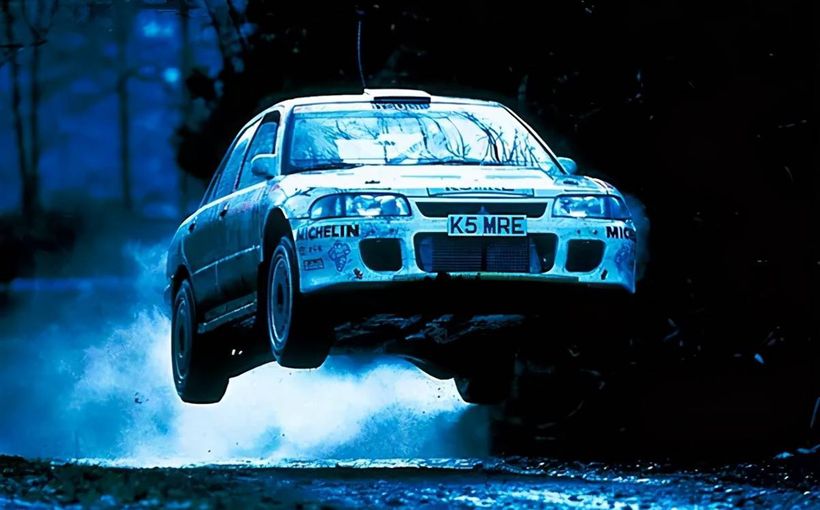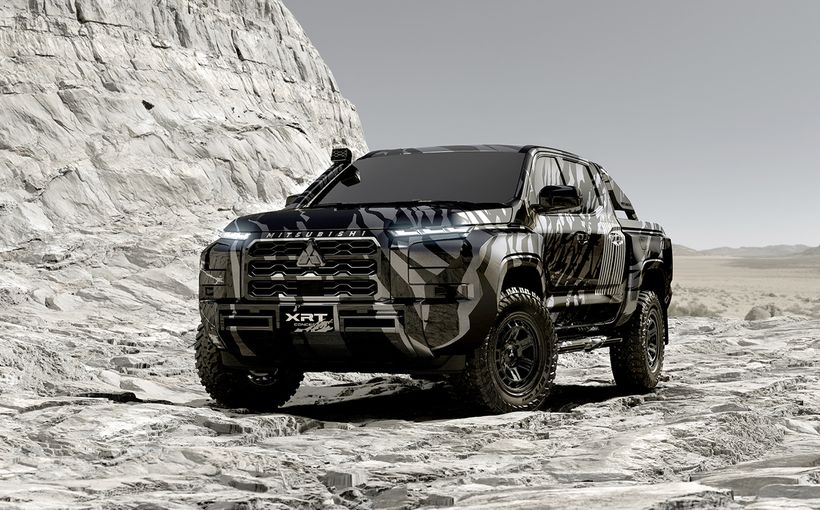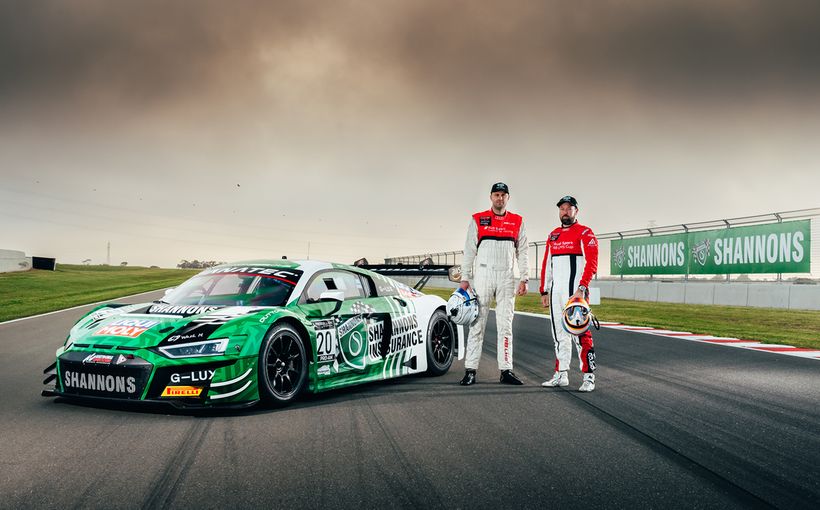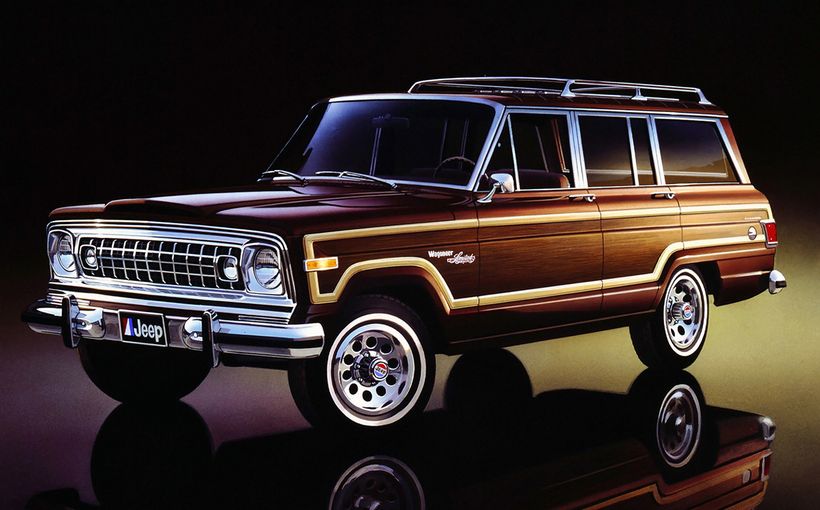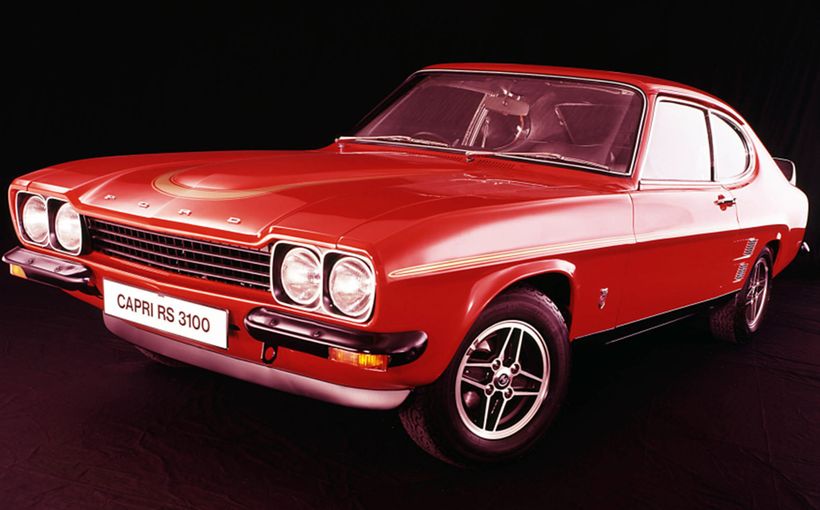Mitsubishi Lancer Evolution: the Group A car that became a global superstar

When motor sport’s world governing body, the FIA, introduced new World Rally Car regulations for the World Rally Championship in 1997, the new breed was expected to outclass cars complying with the decade-old Group A rules. However, Mitsubishi and its Finnish superstar Tommi Makinen did just the opposite in a car which has become a performance icon around the world including Australia – the Lancer Evolution.
Makinen won an unprecedented four drivers’ titles in a row between 1996 and 1999 against top quality factory-backed competition from Subaru, Toyota and Ford, during which time all three switched to the new World Rally Car rules which confusingly used the same acronym as the World Rally Championship (WRC).
What is intriguing about the Lancer Evolution is that it was conceived purely as a smaller and more agile rally replacement for the Group A Galant VR-4. Group A required a manufacturer to annually produce at least 5000 units of the base model road car it wished to compete with (Lancer). From this it could then develop street-legal ‘sporting evolutions’ designed for competition use, with a smaller minimum production requirement of 500 units.
The first Group A Lancer Evolution made its WRC debut in 1993. Mitsubishi continued to develop its ‘sporting evolution’ in following seasons with increasing success, with each new variant produced in a minimum of 500 street-legal units as per the rules. Each variant was identified by a Roman numeral (II, III, IV etc) and often by the abbreviated term ‘Evo’.

The last Group A Lancer to be used in the WRC was the Evo VI after which time Mitsubishi was forced by the FIA to adopt its World Rally Car rules in 2001. So, with the demise of its Group A program, there was no longer a requirement for Mitsubishi to keep producing small batches of street-legal homologation specials each time it needed to upgrade its rallying requirements.
However, by then the Lancer Evolution had become so popular around the world, it was a very profitable and larger volume model in its own right. This was in stark contrast to most bared-boned homologation specials, with high costs (because of their small build numbers) which are difficult - if not impossible - for car manufacturers to recoup. Clearly the Evo was providing a good return on Mitsubishi’s investment.
Evo production continued through four more street-legal evolutions and in an increasing number of variants, until the model was finally axed in 2016. During that time it continued to be a successful rally car across the globe, which included several Australian Rally Championship titles.
It proved to be equally effective in bitumen-based competition including tarmac rallies, international hillclimb championships and circuit-based ‘Time Attack’ time trials. And in Australia, the mighty Evo scored two outright victories in the revived Bathurst 12 Hour production car race.
To understand the worship this vehicle commands from enthusiasts in Australia and around the world, we must briefly re-cap its immense achievements in the global stage.

Mitsubishi Lancer Evolution: World Rally Championship
The Lancer Evo, throughout its 10 evolutions between 1992 and 2016, never wavered from its core design principles of a potent 2.0 litre turbocharged engine and all-wheel drive in a compact four-door sedan body.
Like Subaru, Toyota and Ford, which all downsized their world rally weapons in the 1990s, Mitsubishi saw a similar need to downsize from its Galant VR-4 to the smaller, lighter and more agile Lancer.
This decision was made in consultation with Ralliart Europe, established in the UK in 1983 by Mitsubishi’s star driver Andrew Cowan under the Andrew Cowan Motor Sport banner. ACMS soon became the European base for Mitsubishi’s rally activities, along with a name change which reflected the close involvement of the company’s high performance division, Ralliart.
The first Evo was effectively a transplant of the 4G63T 2.0 litre DOHC turbocharged four cylinder engine and all-wheel drive transmission with viscous-coupling centre differential from the VR-4. With a compact 2500mm wheelbase, 4310mm length and 1695mm width, the Lancer was 135mm shorter in wheelbase, 65mm narrower and 370mm shorter. And, most importantly, its kerb weight of 1170kg was a massive 350kg lighter than the VR-4.

The new Lancer Evolution's WRC debut in 1993 resulted in a couple of podium positions, but it failed to win a round. However, lessons learned were used in development of the Evo II, which with its slight increase in wheelbase, larger front spoiler, suspension and engine tweaks scored a podium on debut in Greece at the half-way point of the 1994 WRC.
In 1995 Ralliart’s Kenneth Eriksson scored the Evo II’s first WRC victory on home soil in Sweden, leading home team-mate Tommi Makinen in a dominant 1-2 finish. The Evo III also debuted in 1995, with more power and a more aggressive body kit with larger front spoiler and rear aerofoil to increase downforce. In Erikkson’s skilled hands it won the 1995 Asia-Pacific Rally Championship (highly prized by all Japanese manufacturers) and Rally Australia, which doubled as an Asia-Pacific round.
Erikkson finished an excellent third in the 1995 WRC, beaten only by the dominant Subaru Impreza works team of Carlos Sainz and Colin McRae, after Toyota was excluded from the results and slapped with a 12-month ban for using illegal (if ingenious) turbo boost restrictors on its Celica GT-Fours.
Makinen’s star was clearly on the rise and the affable Finnish farmer would soon be the undisputed team leader through the sheer weight of his phenomenal driving talent. In 1996, Makkinen and his Evo III were in dazzling form, winning five out of nine rounds to win his and Mitsubishi’s first WRC drivers’ title.

The introduction of World Rally Car regulations for 1997 brought significant change. The new rulebook allowed much greater freedoms for engines and ancillaries, chassis and suspension design, increases in body and track widths, improved aerodynamics and greater use of exotic lightweight materials. It also removed the need for car manufacturers to have to produce small batches of street-legal homologation specials under the old Group A rules.
Subaru, Ford (and later in the year Toyota) all embraced the new rules and introduced World Rally Car versions of their respective Impreza, Escort and Corolla models. However, the FIA allowed a generous transition period for Mitsubishi, which wanted to continue competing under the Group A format with some technical freedoms shared with the new World Rally Cars.
The then-latest Group A Evo IV was ready for the 1997 WRC season, with revisions to the location of engine and trans-axle to improve weight distribution and eliminate torque steer, along with a new turbocharger for increased power and throttle response and other refinements.
Distinguished by a pair of large driving lights set into a big front spoiler, the Evo IV and Makinen maintained their formidable momentum in the face of their new WRC rivals, with the flying Finn winning his and Mitsubishi’s second WRC drivers’ crown with ruthless efficiency.

The Evo IV continued its winning ways into 1998, winning two of the first three rounds before being replaced by the latest Evo V for Spain’s WRC round five. The fifth generation featured a much wider track with flared wheel arches, adjustable aluminium rear aerofoil and numerous engine revisions to increase power and durability.
As Toyota’s WRC star began to fade, competition from Subaru and Ford reached new heights. However, Makinen and Ralliart’s Evo V were in formidable form in the second half of the 1998 season and, with the help of some wretched luck for Subaru, secured his and Mitsubishi’s third consecutive drivers’ crown. And thanks to a pair of victories by team-mate Richard Burns, Mitsubishi also secured its first WRC manufacturers’ title.
1999 saw the debut of the Evo VI, in which increased engine cooling and durability were top priorities. A new front spoiler design, with the big driving lights reduced in size and moved to the outer corners, was required to increase airflow to a larger engine oil cooler and turbo intercooler.
Now displaying lucrative Marlboro sponsorship, Makinen and his Evo VI won on debut in Monte Carlo before taking three more wins to claim an unprecedented fourth straight driver’s title. No wonder Mitsubishi produced a special ‘Tommi Makinen Edition’ of the Evo VI road car to celebrate the Finn’s remarkable achievement!
It was, however, the high tide mark for Mitsubishi in the WRC. In 2000, its World Rally Car rivals appeared to gain the upper hand, with Makinen only winning one round and placing fifth in the drivers’ championship.

In 2001 Makinen and his ‘old’ Group A Evo VI were still a force to be reckoned with, winning three rounds before switching to Ralliart’s first World Rally Car – the Lancer Evolution WRC - in San Remo.
However, it was a difficult transition. Makinen and team-mate Freddy Loix struggled with the new cars and it was arguably the Finn’s frustration in seeing his title hopes slipping away which led to over-driving and a fearful crash which injured his co-driver. More retirements ensured Makinen missed out on his fifth WRC crown and he departed at season’s end to join arch rival Subaru.
Ralliart Europe persisted with the Evo WRC in 2002, with Alistair McRae and Francois Delecour as drivers. However, a continuing lack of results prompted Mitsubishi to take a break from the WRC at the end of the season to concentrate on developing a new car capable of winning the championship.
The company returned in 2004 with high hopes for the new Lancer WRC04 and its WRC05 successor, but Ralliart Europe could not regain its winning edge and withdrew for good from the world championship at the end of the 2005 season.
Although the Lancer’s WRC days were over, the continuation of Evo production until 2016 ensured it still had a lot of winning to do elsewhere, particularly in Australia where it claimed major victories in rallying and circuit racing.

Lancer Evo: The Australian Connection ARC
Although the Lancer Evo’s roots can be traced to 1992, it was not until the late 2000s that it claimed its first of four wins in the Australian Rally Championship (ARC).
Mitsubishi rally veteran Doug Stewart, as Ralliart’s official regional licensee, established Ralliart Australia in 1988 to service the company’s motor sport activities in this part of the world. However, the focus was on Paris-Dakar style ‘Rally Raid’ events like the Australasian Safari in Pajeros and Tritons, along with the annual Asia Pacific Rally Championship.
Surprisingly perhaps, the factory steered clear of any official involvement in the fierce ARC factory wars of the 1990s, dominated by Subaru and to a lesser extent Toyota. In 2003, Mitsubishi Motors Australia regained control of Ralliart Australia from the retiring Stewart and the following year highly experienced team manager Alan Heaphy became team principal of a new-look Team Mitsubishi Ralliart (TMR) Australia based at Dandenong in Melbourne.

In 2005 TMR focused its considerable factory-backed expertise on the Lancer Evo VIII (now with ‘active’ centre diff introduced in the Evo VII) and was the only team to pierce the armour of the dominant works Subaru Impreza attack by winning several major ARC heats that year.
TMR’s momentum continued to build in 2006 with the latest Evo IX and more ARC heat wins, while expanding its primary role in supplying retail motor sport customers with everything from parts to pre-event/in-event servicing to construction of complete ‘turn-key’ competition cars tailored to suit gravel/bitumen-based rallies and circuit racing. This customer support strategy would not only ensure TMR’s commercial success, but also result in some excellent results in the years to come.
Even so, it wasn’t until 2009 that the Evo was finally able to conquer the ARC, which was significant given it was also the first title held since the mid-1980s without any direct manufacturer support. Toyota was the last to leave, withdrawing factory backing of Neal Bates’ Canberra-based team early in the season.

This triggered the departure of team-mate Simon Evans who switched to a Lancer Evo IX backed by his own construction business. Against competition from Corolla S2000/Sportivo, Subaru Impreza WRX and Lancer Evo rivals, Evans became the first driver to win the ARC in a Lancer Evo.
That first ARC win had been a long time coming, but more would soon follow with Victorian duo Justin Dowel and Matt Lee winning the 2011 title in another Evo IX.
The following year the ARC awarded separate championships for 2WD and 4WD cars. Not surprisingly, the mercurial Mitsubishi was the car to beat in the 4WD division, with NSW’s Michael Boaden and Helen Cheers claiming the 2012 championship in another Evo IX.
Although the Lancer Evolution ceased production in 2016, it continued to remain a potent force in the Aussie forests, with Nathan Quinn and David Calder/Ben Searcy in an Evo IX winning the 2017 ARC.

Bathurst 12 Hour
The Lancer Evolution, backed by TMR, proved its brilliant versatility as a competition car by also claiming consecutive outright wins in the re-born Bathurst 12 Hour production car enduro.
The 2008 race held on February 10 was the sixth Bathurst 12 Hour and second to be held since its revival in 2007 after a 13-year absence. Eligible cars were limited to Group 3J (Performance Cars) and Group 3E (Series Production Cars) spread across eight classes. The Lancer Evo was in Class A (High Performance All-Wheel Drive).
Against some high quality rivals throughout the classes, including two examples of the very fast twin-turbo 335i BMW which won the 2007 race, the two Lancer Evo IXs built and prepared by TMR proved to be the class of the field.
They never missed a beat for 12 hours, with each taking turns at the front of the field. With just over 30 laps remaining, the Rod Salmon/Graham Alexander/Damian White took the lead from the team car of Tony and Clark Quinn/Grant Denyer for the final time to score a brilliant 1-2 result.

The two Evo IXs finished 30 seconds apart after 12 hours and 1,500km of spirited inter-team competition, with the third-placed BMW 335i finishing more than a lap behind. According to TMR’s race report, the winning Evo had its front tyres changed as a precaution towards the end of the race. Apart from that, both cars only required refuelling with no oil top-ups. In fact, TMR boasted that “given a brake bleed (they) could have done another 12 hours.”
The reigning champions returned in 2009 armed with the latest and last Lancer Evo X, now powered by Mitsubishi’s 4B11T turbocharged 2.0 litre four. With vehicle eligibility restricted to 3E Series Production Cars, the near-capacity 48-car grid was divided into 10 competing classes with the Evos now in Class C (High Performance All-Wheel Drive).
Once again the two TMR-built and prepared Lancers were in a class of their own, with the Rod Salmon/Tony Longhurst/ Damian White Evo X holding off a late charge in the final hour by team-mates Glyn Crimp/Stuart Kostera/Tony Ricciardello to win by just 6.4 seconds.

The drivers were full of praise for the speed and durability of the Evo X during 12 hours and and 239 laps of Mount Panorama. The second-placed car recorded the second fastest lap of the race, while the winner set a new lap record. Later that year Salmon and TMR would also deliver Mitsubishi its first title in the Australian Manufacturers Championship for Series Production cars.
Mitsubishi’s second consecutive 1-2 finish was made even sweeter by another Evo X finishing third outright with an older Evo IX in fourth, to make it a demoralising 1-2-3-4 clean-sweep. The third-placed Pro-Duct Motorsport Evo X, shared by V8 Supercar stars Jason Bargwanna and Brad Jones, did well to claim the final podium position having made a total of 19 pit stops throughout the day chasing a mysterious fuel pick-up problem.
In TMR’s absence in 2010, the ProDuct Evo X finished second outright to the 2007-winning BMW 335i in what was becoming an intense battle for Bathurst bragging rights between these two high performance brands.

However, it all came to an end in 2011 when race organisers expanded the 12 Hour’s eligibility list to include much faster FIA GT3 cars. This triggered a mass exodus of production car racers and ensured that the Lancer Evo would no longer be vying for outright honours, bringing to an end a brilliant if brief era of Mitsubishi dominance of the Bathurst 12 Hour.
On reflection, the Lancer Evolution is unquestionably one of the finest high performance sports sedans to come out of Japan. Its enormous success at the highest levels of global rallying and circuit racing will ensure its immortal status as a motor sport legend.



